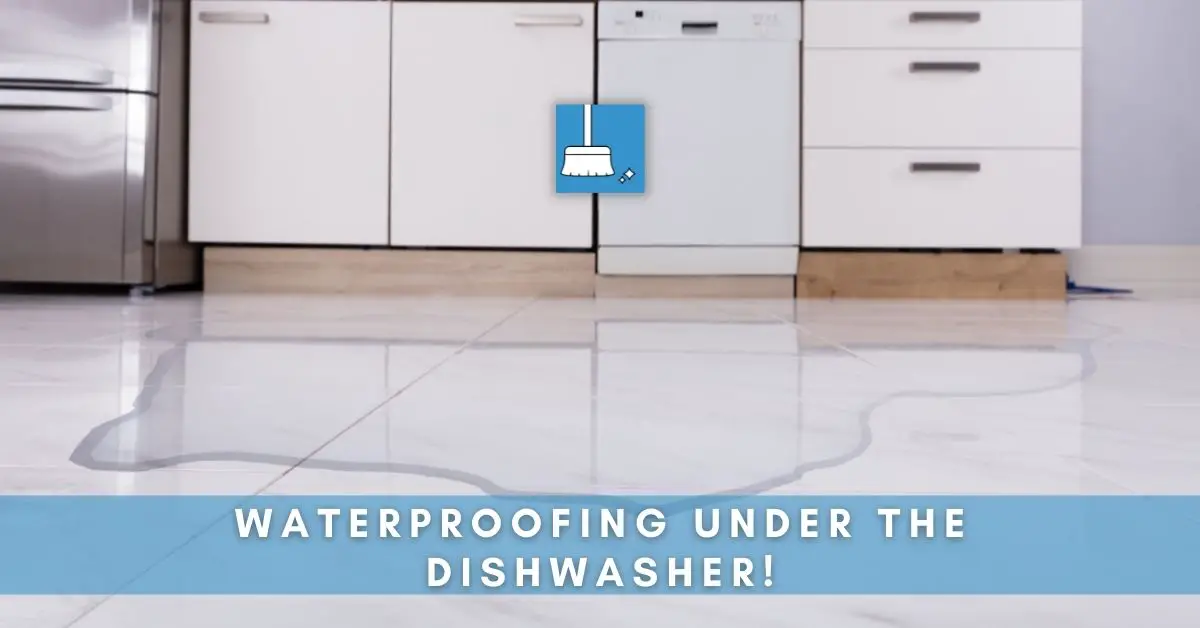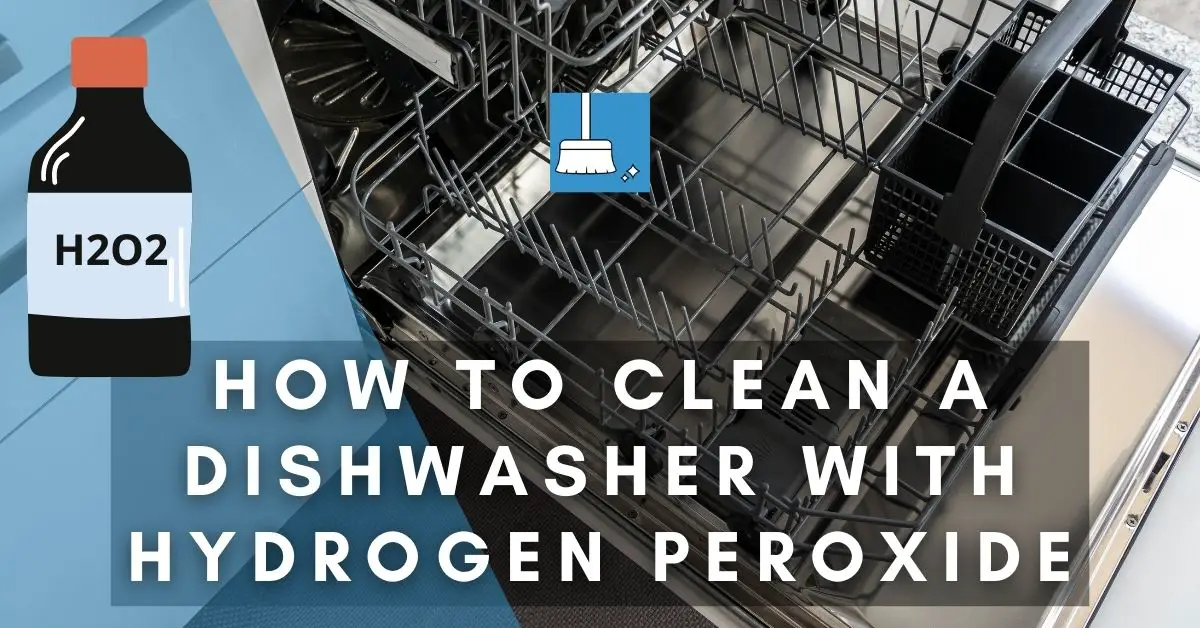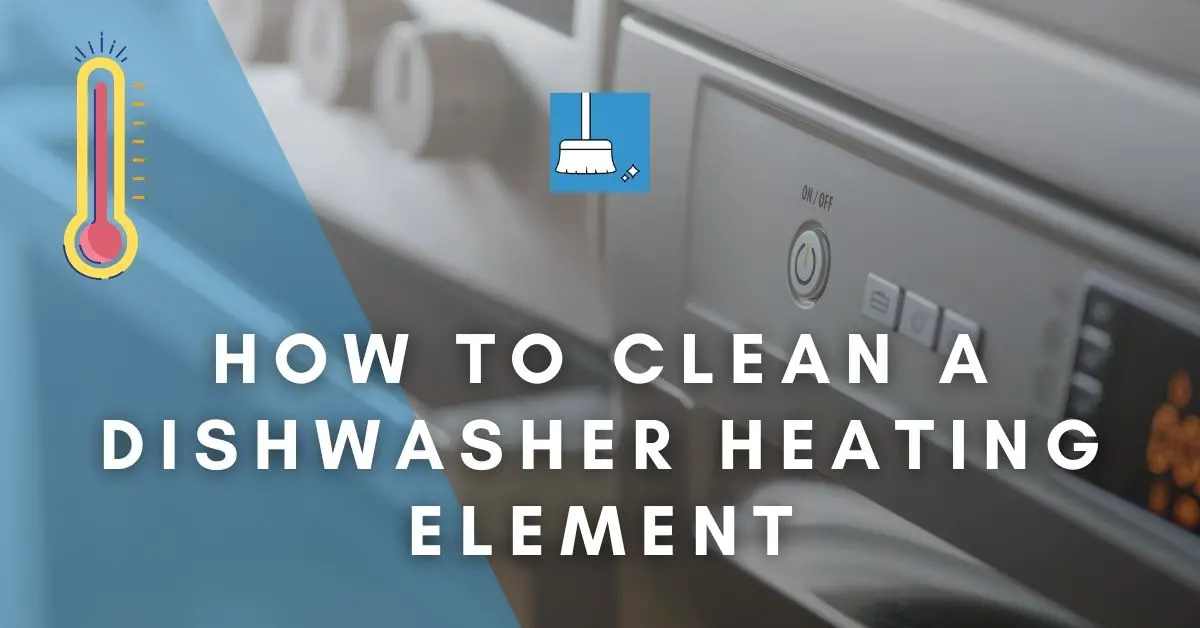You suddenly notice the wood under and around your dishwasher begin to warp and you realize there could be a possible leak with your dishwasher. Unless you remove your dishwasher, it is hard to tell the extent of damage done.
In this article, we will look at ways to add waterproofing under the dishwasher, how to protect the flooring, and the causes of leaks in the dishwasher.
Waterproofing Under the Dishwasher
Dishwashers are mainly placed in the kitchen, and any major leaks that occur should be visible immediately. If there is a leak sensor installed, it will show up on the display panel as a fault.
If there is no sensor, and it is a continuous minor leak, you may not notice it immediately. You will only realize this when the wood begins to warp and stain.
The waterproofing installed will depend on the type of dishwasher you use. There are 2 main types of dishwashers:
1- Built-in Dishwashers
These are designed to match the design and color of the kitchen cabinets. They can be stainless steel or cabinet-matching ones. It is however a permanent installment in the kitchen.
With these kinds of dishwashers, if there is a small, continuous leak, it will slowly ruin your cabinets and the floor.
2- Portable Dishwashers
These are movable as they have wheels and can also be placed on the countertop. You just need access to water and drainage.
With a portable dishwasher, leakages will be easier to notice than with the built-in models.
Why is Waterproofing Necessary?
It is essential to put waterproofing under dishwashers, especially the built-in types, to avoid damaging the floor and cabinets.
1- In case of continuous minor leaks, there is a possibility of water pooling under the dishwasher which will cause cabinets, floor, and baseboards to soak water and start to warp (damage).
2- Mold and mildew thrive in dark and damp environments. Inhalation of mold is a health risk.
3- The area (room, basement, kitchen, etc.) where the dishwasher is placed will start to produce a distinct smell. This is caused by moist wood and mold.
4- The moisture absorbed by the floor immediately underneath the dishwasher will spread to the rest of the connected wood, thus causing additional water damage (warping, cracking, etc)
There are ways to mitigate this disaster and avoid extensive repairs and major costs.
How to Waterproof Under the Dishwasher?
1- Dishwasher Leak Pans / Pan Trays
Dishwasher pan trays (also called leak pans) are the best way to protect the floor beneath the dishwasher.
These can be bought separately and are designed to fit standard-sized cabinets. Dishwasher pans are usually made from heavy-duty plastic, so they’re long-lasting and would not rust or corrode.
These trays do not let the water collect beneath the dishwasher but will push the water in front so that you get a notice of the situation and this can be corrected.
Steps to install the dishwasher leak pan:
STEP 1: Disconnect the power source
STEP 2: Remove the dishwasher from the cabinet carefully. Consult the manual to ensure proper steps are taken to uninstall it. You can place a towel under it while removing it to avoid scratching the floor surface.
STEP 3: Carefully place the leak pan in the dishwasher cabinet. They usually have a standard fitting and should fit in the cabinet easily.
The pan may have peel-off adhesives at the back, to prevent water from seeping back underneath it.
Also, ensure the floor is level before placing the pan. A warped floor may not be level.
STEP 4: Ensure the raised side is at the back of the cabinet.
STEP 5: If you have sensors, you place them at strategic places on the pan to sense leakages.
STEP 6: Slide the dishwasher back into place. The leak pan is designed in a way to allow this without having to lift it.
STEP 7: Reconnect the dishwasher.
Note: with some models, the drain hose may need to be removed to fit the leak pan.
2- Water Leak Sensors
Sensors are the definitely go-to gadgets to detect leaks immediately and prevent damage, especially to wooden flooring.
There are 2 types of water leak detectors:
a) Reasonably priced sensors that send an alert if they detect leaks from appliances like dishwashers and washing machines.
b) Expensive sensors which need to be professionally installed. In case there is a leak, the sensor shuts down the entire supply of water coming to the house. They also monitor the flow of water in the pipes to detect leaks.
It is also important to remember to test the batteries in the sensors regularly. The batteries for sensors that use wifi-based apps usually drain faster than regular sensors.
Planning to Buy a New Dishwasher? Look Out for These Waterproofing Features!
There are different ways to enable waterproofing under dishwashers that may not have built-in leak sensors.
1- Floor Protect Feature
Some models have a ‘floor protect’ feature. This consists of a drain pan that is fitted below the dishwasher to catch any leaking water.
The pan is designed in such a way that if a lot of water is leaking, it tilts forward so that the water is directed in front of the dishwasher for you to notice.
2- Floor Protect Feature with Sensor Alert
There is also the ‘floor protect with alert’ feature that has the pan and a sensor. On detecting any leakages, the sensor will indicate a warning sign on the display to alert you of the leakage.
3- Built-in leak detection sensors
Bosch uses Aquastop technology to detect and protect against leaks.
When a leak is detected by the float sensor, the water supply is cut off immediately and the excess drained to prevent further damage.
The Miele brand also detects leaks and shuts down automatically. The water however needs to be manually drained.
4- LeakSmart Appliance Kits
These are also available separately. Similar to the built-in sensors, these detect leaks and shuts down. An alarm goes off and you can be notified using the LeakSmart app too.
Should I Put Flooring Under My Dishwasher?
You should put flooring under the dishwasher before installing the dishwasher.
Most people make the error of installing the dishwasher first and then doing the flooring.
If you ever need to pull out the dishwasher, it helps if everything is on the same level, so it is easier to slide out. If it is not on level ground, either you may have to break the countertop or remove the flooring in front of the dishwasher to get it out.
Before doing the flooring, especially if it is tiles or wood, ensure there is enough space between the floor and the underside of the kitchen counter for the dishwasher to fit.
The thickness of tiles or wood can affect the space and length where the dishwasher is installed.
It is also possible to put laminate flooring under the dishwasher without disconnecting it.
How Do I Protect My Hardwood Floors from the Dishwasher?
Wood flooring is a popular option for the kitchen. However, a certain level of care needs to be undertaken as water can be very damaging to wood.
You can protect your hardwood floor in the following ways:
1- Use anti-vibration pads under the leg of each appliance. Vibrations can cause small dents on the floor.
2- Install the drain pan to collect any leaking water under the dishwasher. If you notice water in the pan, or you are alerted by sensors and alarms, examine the cause of the leak immediately.
3- Wipe up spills and leaks immediately. Avoid using wet mops as the wood will soak up excess water, which eventually causes it to warp and rot.
Possible Causes of Leaks in Dishwashers
Leaks in dishwashers can be due to the following factors:
1- Torn Hoses
There are 2 hoses connected to the dishwasher. One lets clean water in to clean the dishes. The other hose drains out the dirty water.
Although the width of the hose is thick enough, holes can form due to wear and tear.
2- Faulty Door
If there is a faulty latch, the door may not shut properly, causing leaks. Also, check the seal (gasket) around the door. If it is broken, water can seep out.
3- Defective Fault Switch
A fault switch detects and controls the level of water in the tub. If it is faulty, water may fill up causing leaks.
4- Crooked Positioning
The dishwasher needs to be placed correctly and at level with the floor to avoid any kind of leakages.
5- Wrong Detergent
The wrong detergent can cause an increase in the suds, which will leak from the door.
The faulty parts are usually replaceable but consult the manual before attempting any repair jobs. Always remember to wipe off any water first, before attempting to examine the dishwasher for leakages.
Though you cannot prevent all types of leaks, there are ways to prevent avoidable leaks.
1- Use the correct detergent.
2- Keep the sink drain clean. Unclog any stuck particles on the filter, as it can stop water from draining out properly.
3- Check the door seals regularly for any wear and tear, and cuts.
Final Thoughts!
It is always better to finish the flooring before installing the dishwasher. Always have waterproofing in place to avoid damage. Waterproofing with sensors is a better option as they alert you to leaks.
Examine the dishwasher to find the cause of the leaks and fix it as soon as possible. Always remember to switch off the power source before attempting any repair.
It is advisable not to use the dishwasher if you notice any leaks. If you need to replace your dishwasher, look out for models that have waterproofing and sensors.






Pingback: Can Dishwasher Tablets Go In Cutlery Basket? »